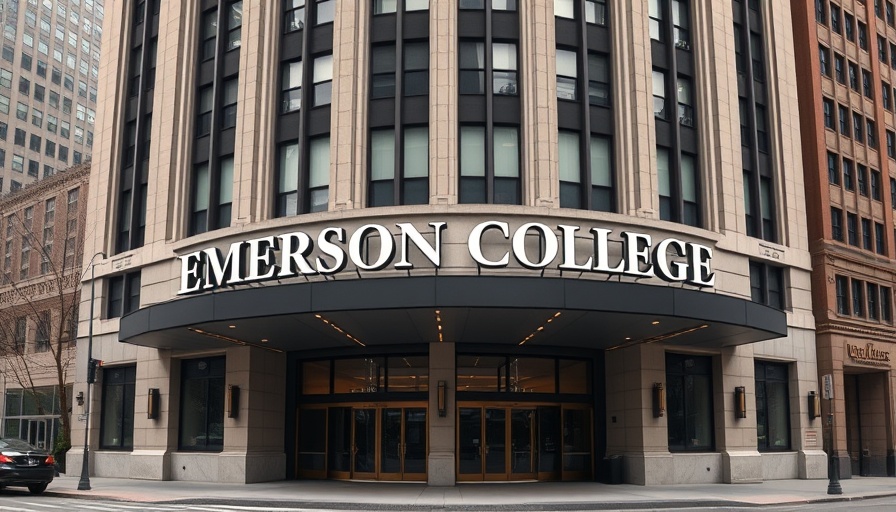
Emerson College Faces Critical Crossroads Amid Unrest
As Emerson College, nestled in the heart of Boston, welcomes new students with its characteristic "driven while artsy" vibe, the excitement of move-in day is shadowed by ongoing turmoil. Once a beacon of progressive values, the college now grapples with significant challenges, including reduced enrollment and financial instability. In the wake of staff layoffs and public protests, questions loom about the school's priorities and future direction.
A Campus Divided: The Impact of Protests
Last fall's protests, which led to 118 arrests, marked a turning point for Emerson’s campus culture. The protests, addressing issues like social justice and political representation, have sparked a deep divide among the community. Critics argue that recent policy changes, such as limiting campus demonstrations, undermine free speech and reflect a growing suppression of dissent at the institution.
In a sign of discontent, leaflets distributed by staff unions on move-in day bluntly questioned the college’s leadership, highlighting stark contrasts between administrative salaries and grassroots layoffs. Emerson's President, Jay Bernhardt, acknowledges these financial strains, stating that the institution's revenue from tuition and housing has dropped significantly, amounting to a $16 million deficit.
Strategic Shifts for Long-term Viability
In response to these challenges, Emerson has rolled out a new strategic plan aimed at renewing its academic mission and stabilizing its financial future. As the school attempts to rebrand itself as a "destination school," it is also placing greater emphasis on vocationally focused degrees. However, the pathway forward is fraught with concerns about conforming to a vision that may alienate the very community it seeks to nurture.
Balancing Values with Financial Realities
As the school continues to evolve, maintaining its core values amidst financial pressures has become increasingly complex. With past actions prompting accusations of straying from its liberal arts roots, Emerson must navigate these treacherous waters carefully. Faculty and staff express anxiety over the lack of transparency from the administration, arguing for dialogue as the cornerstone for healing and rebuilding the community.
The question remains: can Emerson College restore its reputation and align its practices with its branding before it faces a deeper crisis?
In the shifting landscape of higher education, the fate of Emerson College reflects a broader narrative about the future of smaller institutions amidst economic pressures and evolving social values.
 Add Row
Add Row  Add
Add 




Write A Comment